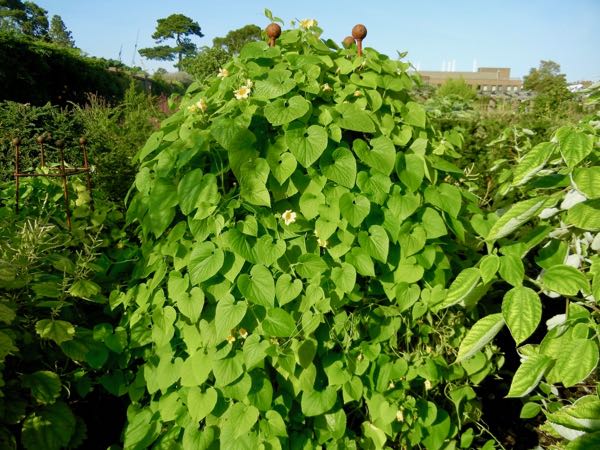Cucurbitaceae: Exploring the Fascinating Family of Plants
Cucurbitaceae is a diverse and captivating family of plants that encompasses a wide range of species. Cucurbitaceae is known by another common name, which is the Gourd Family. This name refers to the diverse group of plants within the family that produce various types of gourd-like fruits, including cucumbers, melons, pumpkins, and squashes. With over 800 known species and numerous cultivated varieties, this botanical family offers a remarkable array of shapes, sizes, colors, and flavors. Commonly referred to as the gourd family, Cucurbitaceae includes well-known members such as cucumbers, melons, pumpkins, and squashes.
Botanical Features: Plants belonging to the Cucurbitaceae family are characterized by their unique botanical features. Most species are herbaceous vines, but some may exhibit shrub-like or tree-like growth forms. These plants often possess long, trailing stems that sprawl across the ground or climb on various structures using tendrils. The leaves are typically broad and palmate, showcasing an attractive arrangement of lobes.
Flowers and Fruits: Cucurbitaceae plants produce unisexual flowers, meaning that male and female flowers are borne on separate plants. The flowers are often large, showy, and feature vibrant colors, attracting pollinators such as bees and butterflies. The fruit structures of Cucurbitaceae are highly diverse and fascinating. From the elongated, cylindrical forms of cucumbers to the rounded shapes of melons and the intricate textures of gourds, the fruits exhibit a wide range of sizes, colors, and patterns.
Cultural and Culinary Significance: Cucurbitaceae plants hold significant cultural and culinary importance in various parts of the world. They have been cultivated for thousands of years, providing essential food sources, medicinal properties, and even decorative elements. Many traditional cuisines incorporate cucurbitaceous vegetables and fruits into a wide range of dishes, including salads, soups, stews, desserts, and pickles. The versatility and nutritional value of these plants have made them staples in diets across different cultures.
Propagation and Cultivation: Cucurbitaceae plants can be propagated through seeds or vegetative means such as stem cuttings or grafting. They generally prefer warm climates and thrive in well-drained soil with ample sunlight. Adequate spacing and support structures are often necessary to accommodate their climbing or sprawling growth habits. Regular watering and proper fertilization are essential to promote healthy growth and fruit development.
The Cucurbitaceae family encompasses a remarkable range of plants, each with its own unique attributes and contributions. From their intriguing botanical features to their cultural significance and culinary versatility, these plants have left an indelible mark on human civilization. Whether grown for their delicious fruits, ornamental value, or medicinal properties, Cucurbitaceae plants continue to captivate and delight plant enthusiasts and culinary enthusiasts alike.
The genera in the Cucurbitaceae family include:
Abobra
Acanthosicyos
Actinostemma
Alsomitra
Ampelosicyos
Ampelosycios
Apodanthera
Austrobryonia
Baijiania
Bambekea
Bayabusua
Benincasa
Blastania
Bolbostemma
Borneosicyos
Brandegea
Bryonia
Calycophysum
Cayaponia
Cephalopentandra
Ceratosanthes
Cionosicys
Citrullus
Coccinia
Cogniauxia
Corallocarpus
Cucumis
Cucurbita
Cucurbitella
Cyclanthera
Cyclantheropsis
Dactyliandra
Dendrosicyos
Diplocyclos
Doyerea
Ecballium
Echinocystis
Echinopepon
× Echinosicyos
Eureiandra
Fevillea
Gerrardanthus
Gomphogyne
Gurania
Gynostemma
Halosicyos
Hanburia
Helmontia
Hemsleya
Herpetospermum
Hodgsonia
Hymenosicyos
Ibervillea
Indofevillea
Indomelothria
Kedrostis
Khmeriosicyos
Lagenaria
Lemurosicyos
Linnaeosicyos
Luffa
Marah
Melothria
Microsechium
Momordica
Muellerargia
Neoalsomitra
Nothoalsomitra
Oreosyce
Papuasicyos
Parasicyos
Penelopeia
Peponium
Peponopsis
Polyclathra
Psiguria
Pteropepon
Raphidiocystis
Ruthalicia
Schizocarpum
Schizopepon
Scopellaria
Sechiopsis
Selysia
Seyrigia
Sicana
Sicydium
Sicyocaulis
Sicyos
Sicyosperma
Sinobaijiania
Siolmatra
Siraitia
Solena
Tecunumania
Telfairia
Trichosanthes
Trochomeria
Trochomeriopsis
Wilbrandia
Xerosicyos
Zanonia
Zehneria

